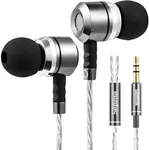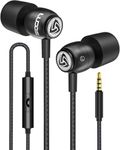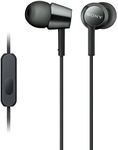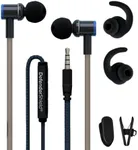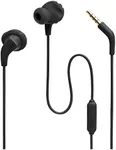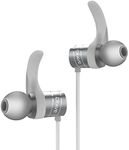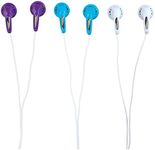Buying Guide for the Best Wired Ear Buds
Choosing the right wired ear buds can significantly enhance your listening experience, whether you're using them for music, podcasts, or phone calls. The key is to understand the various specifications and how they align with your personal needs and preferences. Here are some important factors to consider when selecting wired ear buds.Sound QualitySound quality is crucial as it determines how well you can hear the audio. This includes clarity, bass, treble, and overall balance. High-quality sound can make your listening experience more enjoyable. To navigate this, look for ear buds with a wide frequency range (20 Hz to 20 kHz is standard) and good driver size (8mm to 12mm is common). If you enjoy deep bass, look for ear buds that emphasize lower frequencies. For a balanced sound, choose ear buds that offer a flat or neutral sound profile.
Comfort and FitComfort and fit are important because you'll likely be wearing your ear buds for extended periods. Ear buds come in various shapes and sizes, and some include multiple ear tip sizes to ensure a snug fit. If you have small ears, look for smaller ear buds or those with customizable tips. For those who use ear buds during physical activities, consider options with ear hooks or wings for added stability.
DurabilityDurability refers to how well the ear buds can withstand daily wear and tear. This includes the quality of the materials used and the construction of the ear buds. Look for ear buds with reinforced cables and sturdy connectors. If you plan to use them in various environments, consider ear buds with water or sweat resistance ratings (IPX4 or higher).
Noise IsolationNoise isolation is the ear buds' ability to block out external sounds. This is important if you use them in noisy environments or want to focus on your audio without distractions. Passive noise isolation is achieved through the design and fit of the ear buds, while active noise cancellation (ANC) uses technology to reduce ambient noise. If you need to block out a lot of noise, consider ear buds with ANC. For general use, good passive isolation may suffice.
Microphone QualityMicrophone quality is essential if you plan to use your ear buds for phone calls or voice commands. A good microphone will pick up your voice clearly without too much background noise. Look for ear buds with an in-line microphone and, if possible, noise-canceling features for the mic. If you frequently make calls in noisy environments, prioritize ear buds with high-quality microphones.
Cable Length and TypeThe cable length and type can affect your convenience and comfort. Standard cable lengths range from 1.2 meters to 1.5 meters. A longer cable can be useful if you need more flexibility, but it can also be cumbersome. Some ear buds come with tangle-free or braided cables, which can be more durable and easier to manage. Choose a cable length and type that fits your usage scenario, whether it's for commuting, working out, or sitting at a desk.
ImpedanceImpedance is a measure of electrical resistance and affects how much power the ear buds need to produce sound. Lower impedance (16-32 ohms) is suitable for use with smartphones and portable devices, as they require less power. Higher impedance (above 32 ohms) may provide better sound quality but typically needs a more powerful source, like a dedicated headphone amplifier. For most casual listeners, lower impedance ear buds are more practical.

